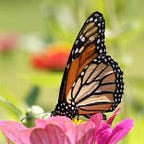FWS Author and Photographer: Craig Springer
Craig Springer is passionate about fish biology, creating art with words, and the surprise of seeing what comes from pressing a shutter. He is a native to New Mexico and when he was a teen, you could always find a seine, fishing rod, or a 12-gauge behind the seat of Craig’s ’77 brown and tan Chevy Cheyenne pickup.
“That’s when and where the interest in fish found me — it was a complete role reversal. The fish caught me.”
Craig recalls the marvel that came with discovering the fishes that swam a stream that poured over the Indiana line into Ohio, where he grew up. “Seining greenside darters lit like a neon sign from riffles of flat gray-green fossil-littered limestone slabs or jostling loose southern redbelly dace from a glide with overhanging fronds impressed both his senses and his morals. His first summer in Ohio, Craig caught his first smallmouth bass and later wrote about that memorable fish in America’s Bountiful Waters.” The book commemorates 150 years of fish conservation in the U.S. Fish and Wildlife Service. The work of some of the USFWS’s finest photographers Sam Stukel, Brett Billings, Doug Canfield, Matt Patterson, Mike Pillow, and Ryan Hagerty grace the book.
Craig graduated from New Mexico State University with a B.S. degree in Fisheries Science. While there, he had the good fortune to assist professors and graduate students with their Gila trout research. He also earned a M.S. in Fisheries through the Arizona Cooperative Fish and Wildlife Research Unit at the University of Arizona when it was still a parcel of the USFWS. He conducted his thesis research on smallmouth bass habitat use and published his first-ever magazine story from his bass research in 1994 in In-Fisherman magazine. Upon graduation, Craig landed at the USFWS’s New Mexico Ecological Services Field Office where he conducted research on White Sands pupfish and the stream fisheries of northern New Mexico and how acequias may affect the fisheries.
Craig has captured many stories of the Service and the story of Gila trout swimming Mineral Creek is worth sharing. Mineral Creek came to the attention of biologists as a candidate stream to receive Gila trout following the massive Whitewater-Baldy Fire of 2012. “Destructive as it was, the forest fire made Mineral Creek suitable for Gila trout. The fire burned in the headlands of the stream and summer rains washed a slurry of ash and debris down its course, removing unwanted competing non-native fishes. With so few suitable streams for Gila trout, biologists seized the opportunity. A helicopter full of trout from Mora National Fish Hatchery was necessary to bring these endangered fish to such a remote canyon. Biologists from multiple agencies worked together and hiked miles of rough terrain, hoping for the Gila trout’s success in this new suitable habitat.”
The Gila trout is protected under the Endangered Species Act. The species was listed as endangered in 1973, and through conservation measures it was down-listed to threatened in 2006. A year later select Gila trout populations were opened to angling for the first time in 50 years!
He reflects, “The fieldwork was great, but writing reports seen by a few individuals before tucking away in a dark cabinet was unfulfilling. That was a catalyst to pursue professional writing, so I earned an M.A. in Rhetoric at the University of New Mexico. I conducted my thesis research on the rhetoric of conservation, nature, and the outdoors; I rubbed my nose in the prose of Aristotle, Aldo Leopold, St. Augustine, Plato, Dan O’Brien, Jose Ortega y Gasset, Edward Abbey, Meriwether Lewis, Annie Dillard, and E. Donnell Thomas.”
Later, he transferred to the Fish and Aquatic Conservation Program in the Albuquerque Regional Office and then FAC-HQ where he edited Eddies magazine through its eight volumes. Craig moved to External Affairs in 2015 and has also spent time working seasonal gigs many years ago with the National Park Service in Washington State and the Bureau of Land Management in Oregon.
Currently, Craig works in External Affairs (EA) for the Service as a Fish Biologist. He recently assisted the Wildlife and Sport Fish Restoration Program in a communications endeavor aimed at the fishing tackle, archery, firearms and ammunition manufacturers that pay federal excise taxes that fund conservation throughout the U.S. Craig has had the opportunity to write about conservation, nature and the USFWS’s scientific work for a multitude of audiences and often times enjoys photography because it helps bolster his stories. Many of his photos capture the beauty of fish, people fishing, or the USFWS’s work around fish and aquatic conservation.
He also co-authored Spearfish National Fish Hatchery with USFWS fish biologist Carlos Martinez and former USFWS archivist Randi Sue Smith, a photo-history of the present-day D.C. Booth Historic National Fish Hatchery and National Fish and Aquatic Conservation Archives. Retired Arizona Game and Fish Department biologist Harley Shaw and Craig co-authored Around Hillsboro, a history of the small New Mexican town, as a fund-raiser for the local historical society and museum and courthouse ruins preservation.
To learn more about Craig Springer’s work in fish biology, check out his recently published book titled, America’s Bountiful Waters. Craig Springer has contributed many images to the National Digital Library, click on his collection view his images. Through this blog, the FWS National Digital Library aims to highlight different people in the field who have contributed spectacular photography or writing in this case, with an eye toward reflecting the full mission of the Service. Visit us at: images.fws.gov. Brought to you by the USFWS Library. #FWSBehindTheLens #WeAreUSFWS
